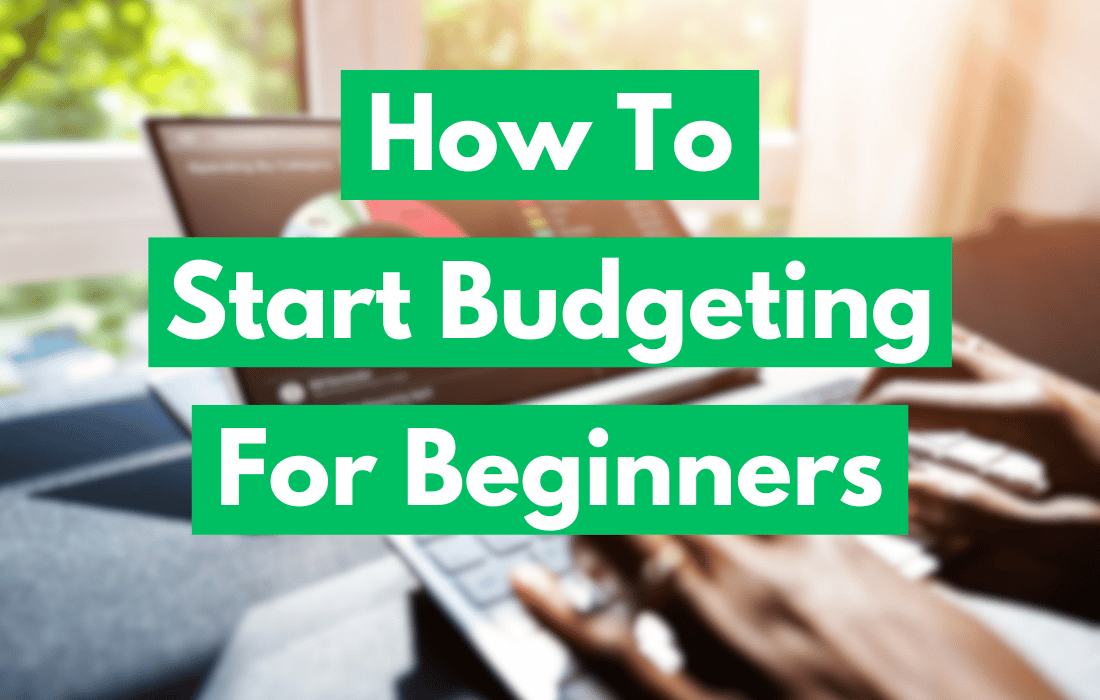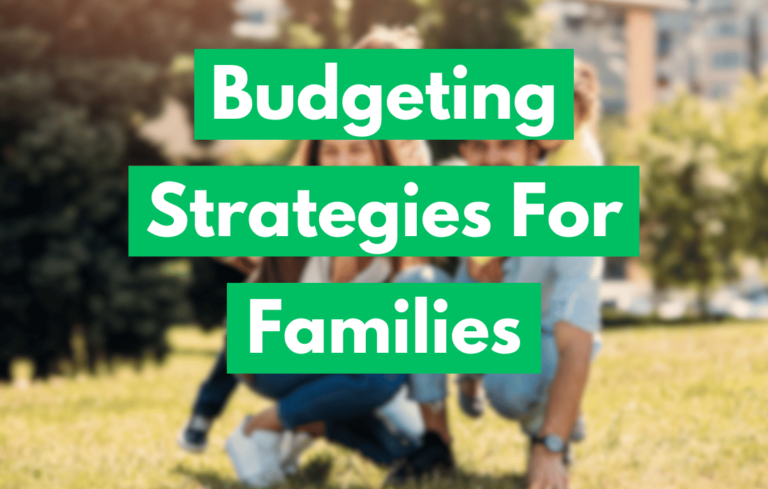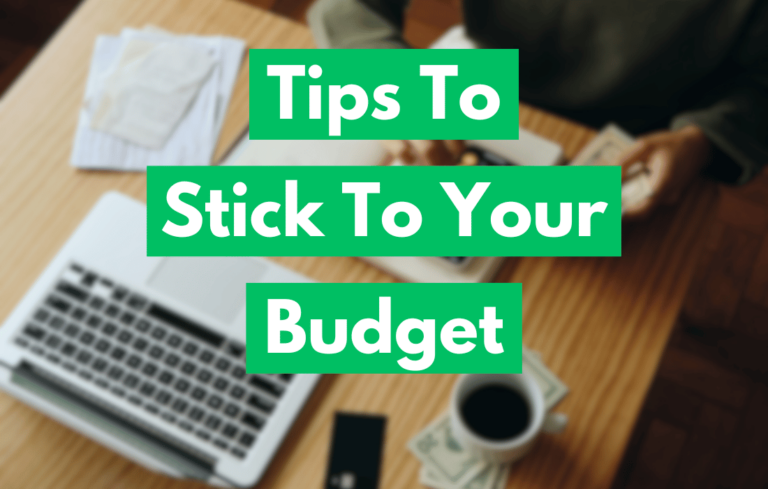How to Start Budgeting for Beginners: Your Best Guide To Financial Freedom

Managing money can feel overwhelming, especially if you’re new to it. The solution? Budgeting. This straightforward practice offers clarity on where your money goes and how you can save more. If you’re keen on gaining control over your finances, understanding the basics of budgeting is essential. In this guide, we’ll walk you through the foundational steps to get started. So let’s get started on How to Start Budgeting for Beginners and set you on the path to smarter money management.
Key Takeaways
- Budgeting Fundamentals: Budgeting offers clarity on income and expenses, empowering informed financial decisions.
- Importance of Budgeting: Beyond managing money, budgeting aids in avoiding debt, achieving financial goals, and ensuring peace of mind.
- Personal Finance Tips: Understand income vs. expenses, prioritize savings, and always pay yourself first.
- Budgeting Techniques: Explore various methods, such as the envelope system, zero-based budgeting, and the 50/30/20 rule, to find what fits you best.
- Tools for Budgeting: Utilize tools ranging from apps like Mint and YNAB to traditional spreadsheets for efficient budget management.
- Avoid Pitfalls: Be wary of common mistakes like underestimating expenses or not adjusting your budget regularly to stay on track.
The Power of Budgeting: Why It Matters
Budgeting isn’t just about jotting down numbers—it’s a transformative tool. Let’s delve into the compelling reasons why budgeting is a must for anyone serious about their finances.
“A budget is telling your money where to go instead of wondering where it went.” – Dave Ramsey
1. Financial Clarity and Understanding
With a budget, you see exactly where your money flows. No more guessing or surprises—just clear insights that empower you to make informed decisions.
2. Sidestepping Debt and Financial Pitfalls
Spot and address overspending areas early. With a clear budget, unexpected expenses won’t derail your financial goals, keeping debt at bay.
3. Efficiently Achieving Financial Goals
Budgeting lets you set aside funds purposefully. Turn your financial dreams into realities by allocating resources smartly.
4. Peace of Mind and Financial Freedom
Take control, reduce stress, and embrace the freedom that comes from being financially aware and proactive.
Example: Let’s say John earns $4,000 a month. Without a budget, by the month’s end, he’s often left wondering where $1,000 or more went. By tracking his expenses, he discovers he spends $300 on dining out, $150 on online subscriptions he barely uses, and $100 on coffee. By identifying these, John can make informed decisions on where to cut back.
Beginner’s Guide to Personal Finance Tips
Navigating the world of personal finance can initially seem like a maze of numbers, terms, and decisions. However, understanding a few foundational concepts can make all the difference. Here are some essential personal finance tips to set you on the right track.
1. Grasping Income vs. Expenses
- Understanding Income: Recognize all your income sources, not just your primary paycheck. This might include side hustles, rental income, dividends, or occasional freelance work.
- Tracking Expenses: It’s not just about knowing your monthly bills. Document every expense, from your morning coffee to that online purchase. Over time, you’ll see patterns and can identify areas for potential savings.
2. The Importance of Saving and Investing
- Start Saving Early: Thanks to compound interest, starting your savings journey early can lead to significantly larger gains in the long run. Even if it’s a small amount, the earlier you begin, the more you benefit.
- Exploring Investment Options: While saving is a secure way to store money, investing can help your money grow at a higher rate. Familiarize yourself with basic investment vehicles like stocks, bonds, and mutual funds. Remember, every investment comes with risks, so always do your research or consult with a financial advisor.
3. Paying Yourself First
- Prioritizing Savings: Before allocating money to discretionary expenses (like dining out or entertainment), set aside a portion of your income for savings or investments. This ensures you consistently build your financial nest egg.
- Automate the Process: Use banking tools to automatically transfer a set amount from your checking account to savings or investment accounts each month. This removes the temptation to spend and ensures you remain committed to your financial goals.
“Do not save what is left after spending, but spend what is left after saving.” – Warren Buffett
4. Building an Emergency Fund
- Expect the Unexpected: Life is full of surprises, some of which can be costly. Having an emergency fund can be a lifesaver, whether it’s a medical emergency, car repair, or unexpected job loss.
- How Much is Enough?: Aim to save between three to six months’ worth of living expenses. This gives you a comfortable buffer during unforeseen events without dipping into long-term savings or accruing debt.
5. Being Wary of Debt
- Good Debt vs. Bad Debt: Not all debt is created equal. While mortgages or student loans can be considered investments in your future, high-interest credit card debt can be crippling.
- Stay Informed: Always know the interest rates on your loans or credit cards. Prioritize paying off high-interest debt first and try to avoid accumulating it in the first place.
6. Regularly Reviewing Your Finances
- Stay Updated: Your financial situation won’t remain static. Regularly review and adjust your budget, track your spending, and evaluate your savings and investment strategies.
- Seek Expertise When Needed: Consider consulting a financial advisor if you’re unsure about certain financial decisions. They can provide tailored advice and strategies based on your unique situation.
Embarking on your “How to Start Budgeting for Beginners” personal finance journey might seem daunting initially, but with these foundational tips in mind, you’re well-equipped to make informed decisions. Remember, personal finance is just that—personal. Tailor these budgeting tips to fit your lifestyle and goals, and watch as you build a secure and prosperous financial future.
Basic Budgeting Techniques Unveiled
While the essence of budgeting remains consistent—managing income against expenses—the methods can vary widely. Finding a technique that complements your financial situation, goals, and personal preferences is crucial. Here’s a closer look at some popular budgeting techniques to help you decide:
1. Envelope Method
Overview: This classic approach involves allocating a specific amount of cash into different envelopes, each labeled for a particular category, like groceries, entertainment, or utilities.
Pros:
- Tangible and straightforward, making it great for visual learners.
- Limits overspending by providing a clear cutoff.
Cons:
- Less effective in a digital age where cashless transactions dominate.
- Can be challenging to manage for larger expenses.
Best For: Those wanting a hands-on approach and prefer using cash for everyday transactions.
2. Zero-based Budgeting
Overview: At the end of the month, the goal is to have a budget where your income minus expenses equals zero. This means every dollar has a specific purpose.
Pros:
- Encourages users to be meticulous and aware of every expenditure.
- Can help identify and eliminate unnecessary expenses.
Cons:
- Can be time-consuming as it requires regular adjustment.
- Might feel restrictive for some individuals.
Best For: Those wanting a detailed and proactive approach to budgeting, ensuring no dollar goes unaccounted for.
3. 50/30/20 Rule
Overview: Allocate your after-tax income as follows: 50% to needs, 30% to wants, and 20% to savings or debt repayment.
Pros:
- Simple and easy to remember.
- Provides a balanced approach, ensuring essential expenses, personal enjoyment, and savings are all addressed.
Cons:
- Might not be suitable for everyone, especially if fixed expenses (like rent in high-cost areas) consume more than 50% of income.
- Can be too generalized for those wanting a detailed budget breakdown.
Example with Calculation: Imagine Sarah earns a monthly after-tax income of $5,000. Based on the 50/30/20 rule:
- Needs (50%): 0.50×5,000=$2,500
- Wants (30%): 0.30×5,000=$1,500
- Savings (20%): 0.20×5,000=$1,000
Sarah should aim to allocate her budget so that necessities like rent and utilities don’t exceed $2,500, discretionary expenses stay under $1,500, and she sets aside $1,000 for savings or debt repayment.
Best For: Those seeking a straightforward guideline that balances necessities, leisure, and financial growth.
4. The Value-based Budget
Overview: Focus your spending on what you value most. Allocate more funds to areas that bring you happiness and fulfillment and cut back on areas that don’t.
Pros:
- Personalized approach tailored to individual priorities.
- Promotes conscious spending and financial well-being.
Cons:
- Requires introspection and regular evaluation of personal values.
- Might be harder to quantify compared to more structured methods.
Best For: Individuals wanting a flexible method that aligns spending with personal values and life goals.
Choosing the right budgeting technique is a personal journey. It might take some trial and error, but the key is to find a method that you can stick with consistently. Remember, the best budgeting technique is one that you’ll use regularly and helps you achieve your financial goals.
Embarking on Your Budgeting Journey: Step-by-Step
Starting a budget might seem like an uphill task, but with the right guidance, it can become a straightforward and rewarding process. Here’s a detailed roadmap to guide you through establishing your first budget:
1. Evaluate Your Current Financial Situation
- List All Income Sources: This isn’t limited to just your main job. Include side gigs, rental income, dividends, or even occasional bonuses.
- Detail Your Monthly Expenses: Capture every single cost, from fixed expenses like rent or mortgage payments to variable expenses like dining out or entertainment. Using apps or tools can streamline this process.
- Understand Your Financial Health: Once you’ve listed incomes and expenses, compute the difference. If you’re spending more than you earn, it’s a signal for change.
Example with Calculation: Consider Alex, who wants to start a budget. He lists his monthly income sources:
- Primary job: $3,200
- Side gig: $300
- Dividends: $100
Total Income: $3,600
He then lists his expenses:
- Rent: $1,200
- Groceries: $400
- Utilities: $150
- Entertainment: $250
- Transport: $200
- Others: $300
Total Expenses: $2,500
By subtracting his expenses from his income ($3,600 – $2,500), Alex finds he has a surplus of $1,100 each month, which he can allocate towards savings, investments, or other financial goals.
2. Set Clear Financial Goals
- Short-Term Goals: You aim to achieve these targets in the next year or so. It could be saving for a vacation, buying a new gadget, or creating an emergency fund.
- Long-Term Goals: Projects that span several years or even decades. Think retirement funds, buying a house or setting up a college fund for your kids.
- Prioritize Your Goals: Determine which goals are most essential to you and allocate resources accordingly.
3. Choose a Budgeting Technique
- Research: We’ve discussed various budgeting techniques earlier. Dive deeper into each to understand which might suit you best.
- Test Drive: Initially, try out a method for a few weeks or a month. If it feels off or too complicated, don’t hesitate to switch.
- Customize: Personalize your chosen technique. If a hybrid of two methods works best for you, go for it!
4. Monitor and Adjust
- Regular Check-Ins: Set aside time, be it weekly or monthly, to review your budget. This helps in identifying any discrepancies and understanding your spending patterns.
- Stay Flexible: Your budget isn’t set in stone. Life changes, and your budget should adapt accordingly. Whether it’s a job change, unexpected expenses, or new financial goals, always be ready to tweak your budget.
- Celebrate Milestones: Did you achieve a short-term goal? Or maybe you stuck to your budget for six straight months? Celebrate these victories. It boosts motivation and makes the journey enjoyable.
Crafting your first budget is like laying the foundation for a house. With a strong and well-thought-out base, you’re setting yourself up for financial stability and success. The key lies in being informed, consistent, and adaptive. As you move forward, remember that every financial journey is personal, so make your budget a reflection of your goals, values, and aspirations.
Tools to Elevate Your Budgeting Game
In the digital age, a plethora of tools are at your disposal to simplify and enhance the budgeting process. Whether you’re a pen-and-paper enthusiast or a tech-savvy individual, there’s something for everyone. Let’s uncover some tools to supercharge your budgeting journey:
1. Budgeting Apps
- Mint: This free tool aggregates all your financial accounts in one place, giving you a comprehensive view. With automatic categorization of transactions and credit score insights, it’s perfect for those wanting a hands-off approach.
- You Need A Budget (YNAB): Ideal for zero-based budgeting enthusiasts, YNAB helps you allocate every dollar a role. It’s a paid service but offers in-depth budgeting tutorials and community support.
- PocketGuard: This app is all about simplicity. It gives you a clear view of how much you have left to spend after accounting for bills, goals, and recurring expenses.
2. Spreadsheets
- Excel: Microsoft’s tried-and-true tool offers customizable budgeting templates. With a bit of know-how, you can tailor everything to your precise needs.
- Google Sheets: This free alternative to Excel is cloud-based, meaning you can access your budget from any device. Plus, with shared access, it’s perfect for couples or families budgeting together.
- Tiller: Automate your spreadsheet budgeting with Tiller. It fetches your financial data and populates it into customizable Google Sheets or Excel templates.
3. Manual Tracking Tools
- Pen & Paper: Sometimes, old-fashioned is best. Physically writing down each expense can make you more aware of your spending habits. Journals or dedicated budgeting notebooks are available for this purpose.
- Printable Budgeting Sheets: Find these online for free or purchase from creators. They often come with categories and trackers, offering a structured yet manual approach.
4. Digital Envelopes
- GoodBudget: Inspired by the envelope method but adapted for the digital age. Allocate money to virtual envelopes and track spending accordingly.
- Mvelopes: This app integrates your bank accounts and offers a broader financial picture while adhering to the envelope principle.
5. Financial Management Software
- Quicken: Beyond just budgeting, Quicken offers investment tracking, bill management, and other comprehensive financial tools.
- Personal Capital: This free tool blends budgeting with an emphasis on investment tracking. It provides a holistic view of your financial health.
The wealth of tools available today makes budgeting more accessible than ever. The challenge lies in finding the right fit. Take time to explore, test, and figure out which tool aligns with your budgeting style and needs. With the right tool in hand, maintaining and optimizing your budget becomes a breeze.
Avoid These Common Budgeting Pitfalls
Crafting a budget is a step in the right direction, but maintaining it effectively is where the real challenge lies. Many beginners stumble upon common hurdles that can derail their financial progress. By being aware of these pitfalls, you can navigate your budgeting journey more smoothly. Here’s what to watch out for:
1. Underestimating Expenses
- The Issue: Often, we tend to forget occasional or unexpected expenses, leading to budget shortfalls.
- The Solution: Always round up estimates and set aside a buffer for unforeseen costs. Regularly reviewing and updating your budget can also help catch any underestimations.
2. Overestimating Income
- The Issue: Banking on bonuses or irregular income can lead to an inflated sense of available funds.
- The Solution: Base your budget on your stable, regular income. Treat any extra earnings as a bonus, which you can allocate to savings or specific goals, rather than regular expenses.
3. Not Reviewing and Adjusting Regularly
- The Issue: Sticking to a static budget can lead to discrepancies as prices rise or your financial situation changes.
- The Solution: Set a monthly or bi-monthly date to review your budget. Adjust for any changes in income, expenses, or financial goals.
4. Ignoring Small Expenses
- The Issue: Daily coffees or occasional treats might seem insignificant but add up over time.
- The Solution: Track every expense, no matter how small. Consider using apps or keeping a daily spending diary to stay on top of these costs.
Example
Emma loves her morning latte, costing $5. While it seems like a small amount, over a month, this daily habit amounts to 5×30=$150
Over a year, that’s 150×12=$1,800 – almost enough for an international vacation or a substantial addition to her emergency fund. Recognizing this can help Emma decide if the daily latte is worth the yearly cost.
5. Not Accounting for Irregular Expenses
- The Issue: Annual insurance premiums, holiday spending, or car maintenance can disrupt a monthly budget.
- The Solution: Break down these irregular expenses into monthly amounts. Set this amount aside each month, so you’re prepared when the bill comes due.
6. Being Overly Restrictive
- The Issue: Setting an unrealistically tight budget can lead to frustration and the likelihood of abandoning budgeting altogether.
- The Solution: While it’s essential to be disciplined, ensure your budget has some flexibility. Allow for occasional treats and entertainment to make the process sustainable.
7. Not Setting Clear Financial Goals
- The Issue: Without specific goals, it’s easy to lose direction and motivation in the budgeting process.
- The Solution: Clearly define your short-term and long-term financial objectives. This provides purpose to your budget and acts as a motivational tool.
While budgeting can seem daunting, especially with potential pitfalls along the way, being forewarned is forearmed. By being proactive and mindful of these common mistakes, you’re better equipped to stay on track. Remember, the journey to financial stability isn’t about perfection—it’s about persistence, awareness, and continuous learning.
Conclusion: Taking Charge of Your Financial Future
Embarking on the journey of budgeting is more than just numbers and calculations—it’s about forging a path to financial freedom, security, and empowerment. Throughout this guide, we’ve unraveled the significance of budgeting, showcased various techniques, and highlighted tools to streamline the process. But remember, the most effective budget is one tailored to your unique life and goals.
While the road to mastering personal finance may have its twists and turns, with the right knowledge and tools in hand, you’re well-equipped to navigate any challenges. As you apply the insights shared here, envision the peace of mind, opportunities, and growth that a well-managed budget can bring.
In the wise words of Benjamin Franklin, “An investment in knowledge pays the best interest.” By investing time and effort into understanding and implementing a budget today, you’re setting the stage for a prosperous and fulfilling financial future. So, take that first step, embrace the journey, and watch as the world of financial possibilities unfolds before you.
How to Start Budgeting for Beginners – FAQ
1. Why is budgeting important even if I have a steady income?
Budgeting isn’t solely about managing limited resources. Even with a steady income, budgeting helps you allocate funds efficiently, save for future goals, and ensure you’re not unknowingly overspending in certain areas.
2. What is the 50-30-20 rule of budgeting?
The 50-30-20 rule is a simple budgeting guideline that allocates your after-tax income as follows:
- 50% to needs: Essential expenditures like housing, utilities, groceries, and transportation.
- 30% to wants: Discretionary expenses such as entertainment, dining out, and hobbies.
- 20% to savings and debt repayment: This includes contributions to retirement funds, emergency savings, and paying off debts.
3. What are 3 basic steps to starting a budget?
The three foundational steps to kickstart your budgeting journey are:
- Evaluate Your Financial Situation: Understand your total monthly income and list all your expenses.
- Set Clear Financial Goals: Determine short-term and long-term objectives you aim to achieve with your budget.
- Track and Monitor: Regularly record and review your income and expenditures to ensure alignment with your budget.
4. What are the first 5 things you should list in a budget?
When starting a budget, it’s crucial to list the most substantial and consistent expenses first. The first five items typically include:
- Housing: Rent or mortgage payments.
- Utilities: Electricity, water, gas, and other essential services.
- Transportation: Car payments, fuel, public transit costs, etc.
- Groceries/Food: Monthly spending on food and household items.
- Insurance: Health, auto, and life insurance premiums.
5. What is the 30-20-10 rule?
The 30-20-10 rule isn’t as widely recognized as the 50-30-20 rule in the realm of personal finance. However, if someone refers to it, it’s essential to ask for clarification or context. It’s possible that different financial experts or resources have varying interpretations or guidelines for this rule.
6. How often should I review and adjust my budget?
It’s advisable to review your budget monthly to track your spending and ensure you’re staying on course. However, major life changes (like a new job, moving cities, or growing your family) might require immediate adjustments.
7. What if the budgeting technique I chose isn’t working for me?
That’s okay! Not every method suits everyone. If one technique feels cumbersome or ineffective, explore others. The key is to find a method you’ll stick with consistently.
8. How do I budget with an irregular income?
For those with fluctuating earnings, consider budgeting based on your lowest expected monthly income. This conservative approach ensures you can cover essentials even in leaner months. Any extra income can be allocated to savings, investments, or non-essential expenses.
9. Are paid budgeting tools better than free ones?
Not necessarily. While some paid tools offer advanced features, many free tools provide robust budgeting capabilities. The best tool is one that aligns with your needs and is user-friendly for you.
10. How do I handle unexpected expenses in my budget?
It’s always a good idea to have a category in your budget for unforeseen expenses. This can be a monthly allocation or an emergency fund you’ve built over time. Planning for the unexpected ensures such expenses don’t derail your financial goals.
11. How can I stay motivated to stick to my budget?
Set clear financial goals, both short-term (like buying a new gadget) and long-term (like purchasing a home). Visualizing and working towards these goals can be a powerful motivator. Celebrate small victories along the way to keep up the momentum.




One Comment